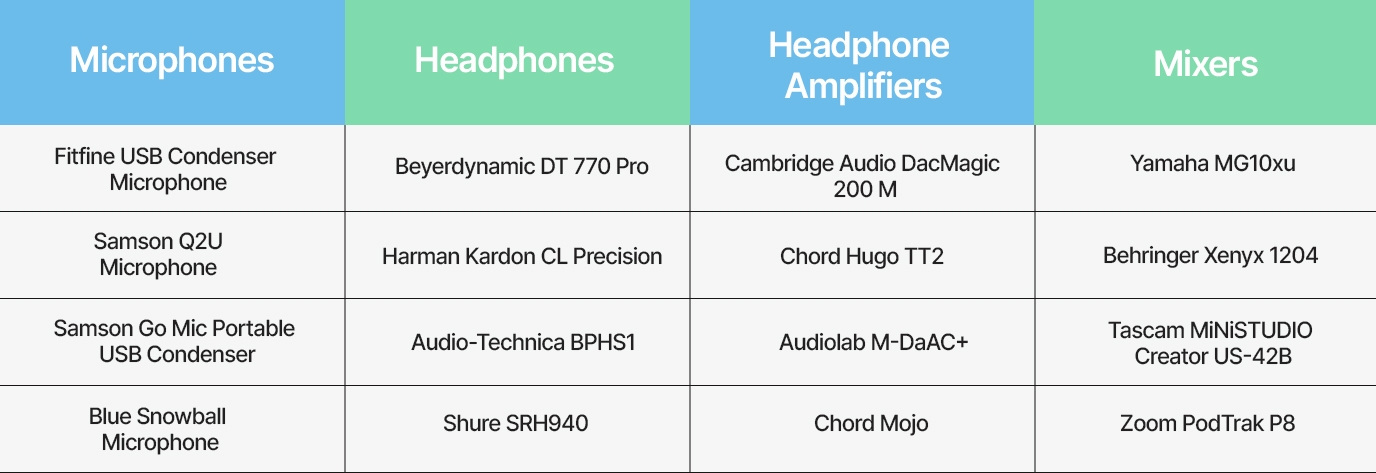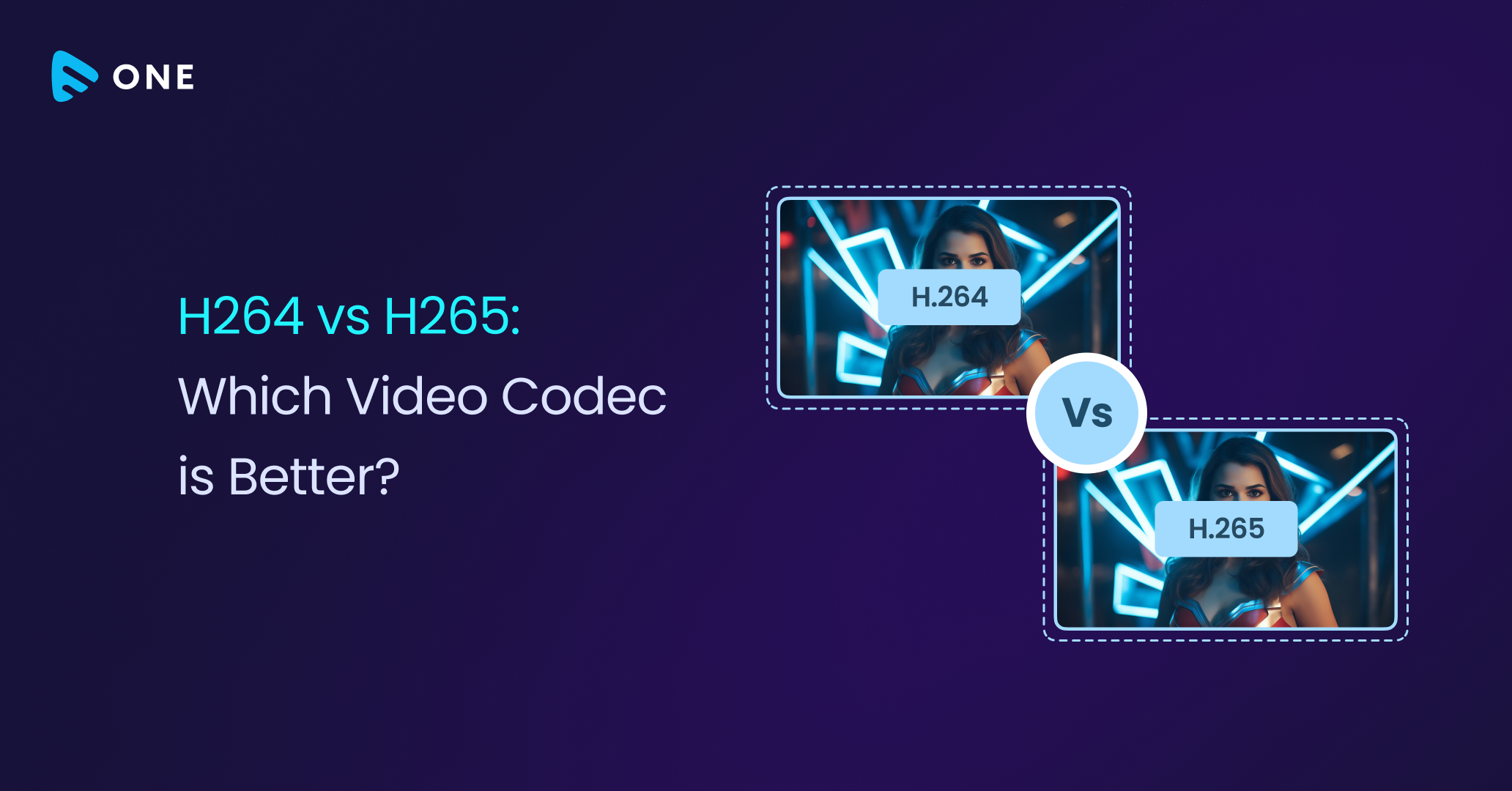There are over 2 million active podcasts around the world, while nearly 60% of the U.S. consumers listen to podcasts regularly. Research shows that over 91% of the Australian population older than 12 are aware of podcasting and that’s not it! A latest survey revealed that 162 million U.S. citizens older than 12 have listened to at least one podcast in a year. These figures clearly depict the skyrocketing popularity of podcasting around the globe.
Podcasts are no longer limited to be used for entertainment purposes, but have become widespread in diverse industries and use cases – corporate to SaaS. Boosting audience engagement to creating impactful brand presence – podcasting helps a business as well as an individual to achieve various targets and caters to the overall growth.
With this growing popularity of podcasting, a frequently asked question arises – How do I make my podcast stand out from the crowd? The answer often lies in the podcast recording practices you adopt.
While we focus on marketing of podcasts more, we often forget that many of the tips and strategies to excel lie in the way we record a podcast. To enlighten you more on this, we have compiled this blog to guide you through the podcast recording best practices in 2022.
Now before we start, let’s take a look at the benefits of ‘Podcasting’ in today’s day and age.
Advantages of Podcasting in 2022
With more people being aware of podcasting, it has become a trend that is going to last for years. There are multiple reasons why podcasting is widely adopted in a broad range of sectors.
Let’s walk you through the key advantages of podcasting in 2022.
Builds Brand Awareness
Research says that it takes 5 to 7 impressions for people to remember a brand. Podcasting lets you crack this easily by building brand awareness with regular podcast episodes.
By conducting relevant podcast sessions that are compatible with any device, platform, or media, you can create a strong brand presence among the audience while ensuring that your brand is not going out of sight and mind for your existing customers.
Better Engagement with Audience
Podcasting is a great way to build a deeper connection with your audience. Based on your product or business type and target audience you can create podcasts on different topics, for different purposes.
It can be brand stories, informative or knowledge-sharing guest sessions, or others. Such podcasts help you create a long-lasting connection with the audience beyond just a buyer-seller relationship.
Helps in Marketing
Podcasting, if done right, can be your potential marketing tool that boosts audience engagement, drives word-of-mouth and organic promotion, lowers the customer attrition rate and aids in customer acquisition. Apart from generic podcasting, you can utilize it for product selling, upselling, cross selling, and other specific purposes to increase your overall business revenue.
Another advantage of podcasting is – it is cost-effective to produce, stream, and achieve the relevant business targets compared to the other marketing strategies. It helps you cut down the additional marketing costs and invest in other areas of your business.
Now that we have discussed the advantages of podcasting, let’s delve right into the best practices when starting your podcast.

Podcast Recording Best Practices to Adopt in 2022
As discussed above, podcasting has garnered huge popularity for a reason, precisely, for multiple reasons and once you crack the ways to record quality podcasts, you can leverage its potential in multiple ways.
1. Research and Plan Your Topic
It is pivotal to have a crystal clear idea on your podcasting topic to ensure that you are to-the-point and focused on the main content while recording your podcasts. Do a thorough research on the topic you will be podcasting on. Check out the similar podcasts available and plan your content in a way so that you can outperform them.
Also, it’s recommended that you keep in mind the purpose of recording the podcast in the first place. It will help you stay aligned with your overall podcasting goals by recording it accordingly. For instance, if you are recording a podcast to boost audience engagement for your business, then it is recommended to keep your podcast more interactive while recording it. Similarly, if your podcast recording goal is to improve brand awareness, then you can include the relevant brand information at the proper time stamps during podcast recording and so on.
2. Do Warm Up
One of the key podcast recording best practices you should adopt for any kind of podcast recording is – doing a warm up. It will help you smoothly deliver your speech during podcast recording. Go through your podcasting script, practice saying a few lines, or the tone you will be speaking in. And you are all set to go!
3. Opt for the Right Equipment
The key to a great podcast recording significantly lies in the type of equipment you choose. Here’s our experts’ suggestions to choose the right podcasting equipment for your podcast recording.

4. Make Your Room Soundproof
No matter how good the technical equipment are, you must do the proper setup in the room you will be podcasting from. You must make your room soundproof to bring out the best in your podcasts.
This is one of the key podcast recording best practices and yet often overlooked. Let’s walk you through the main pointers to make your podcast recording room soundproof.
- The first and foremost thing – choose a room where there will be minimum noise naturally as it will make your task easier
- Find out the top source points of noise – origins, entry points, and reflection points. You need to work on them
- Use thick drapery or noise-absorbing curtains on the windows and doors to reduce the outside noise
- Use area rugs with added pads below them to block the noise from your lower floor if any
- Use acoustic panels on the doors, or any open space acting as a doorway to noise to your room
- Use soundproofing foams to block the noise by mounting them on the walls, corners, or any place you want to block the noise from
- Use soundproof wallpapers on your walls to block any possible sound from the other end
And others.
5. Create a Noise Profile
A noise profile is meant to describe the type and properties of noises that are produced by a device during podcasting. It helps in deciding on exactly what type of background noise is to be removed.
To create a noise profile at the beginning of podcasting, just pause for six to seven seconds at the beginning of your podcast recording and eliminate all the environmental noises. This will help you identify the intended noise and remove them properly.
6. Opt for Separate Channels
This is one of the podcast recording best practices where you need to dedicate a separate channel for each of the persons participating in the podcast recording. This will not only help to execute the recording process easily by focusing on each individual’s volume, technique, and others, but will also help you edit and mix them later easily.You can use the multi-track recording feature of a recording software to implement this.
7. Watch Your Breathing
How you breathe during podcast recording has a lot to do with determining how the outcome will be. It is a good practice to inhale and exhale in small regular breaths, and move away from the mic or stay on mute when you need to take a long breath.
The focus is to not make your breathing sound audible or let it degrade the overall audio quality. It is a good practice to use a pop filter in-between your mouth and the mic so that it can block out the exhaled air from reaching to the mic and producing a constant noise.
8. Master the Right Microphone Techniques
Before you start podcast recording, check the mic set up and the level of it. It is recommended to keep your mouth at the same level of the mic and understand the difference in the intensity of the audio when you move closer to the mic or further from it.
Try to make the sitting arrangement and the positioning of the mic and pop filter in a way that gives the best result. You can test the sound before you start recording your podcast.
9. Try Voice Modulation
No one likes to hear monotonous voices. Podcasting is an art and voice modulation is one of the most effective ways to keep your podcasts engaging to the audience.
Voice modulation is the process of changing the tone, pitch, and how your voice sounds as per the requirements. Here’s some go-to tips to implement this as one of the podcast recording best practices –
- Practice variations in your voice. Imagine, you are reciting or reading out an interesting piece. Adjust your tone, pitch, and voice type throughout the read as required – loud and clear, smooth, soft, low pitch, high pitch, and others to let your audience stay glued to your every podcast episode
- Master the art of conveying the proper punctuations and taking pause exactly where it’s needed
- Avoid using fillers and fluff words like uhms, precisely, so etc. excessively as it degrades the podcast quality. Emphasize on voice modulation instead
- Focus on the words and the respective emotions and thoughts to portray them better
- Practice, practice, and practice, it only gets better with time. And yes, Smile where needed – it’s not visible but it can be sensed by your audience!
Broadcast Industry-Grade Podcasts with Muvi
The above guide on podcast recording best practices will help you bring out the best in your podcasts. No matter what is the purpose of your podcasting – marketing or purely for entertainment purposes, it is recommended to adopt the best practices as mentioned above to keep your audience engagement level high and align with your podcasting goals better.
To ensure that you do justice to your podcast recording, another crucial factor you need to emphasize is – the podcast sharing platform. Unless you choose an industry-grade quality platform to record and share your podcast, all may go in vain.
Muvi, an enterprise-grade video and audio platform provider can accommodate all your requirements and lets you implement all the podcast recording best practices easily. Muvi comes with a dedicated podcast solution that includes on-demand and live podcasting, podcast monetization, robust security for podcast delivery, your own branded podcasting apps and website, and many more.
Take a 14-day free trial today to get started (no credit card required)!



















Add your comment